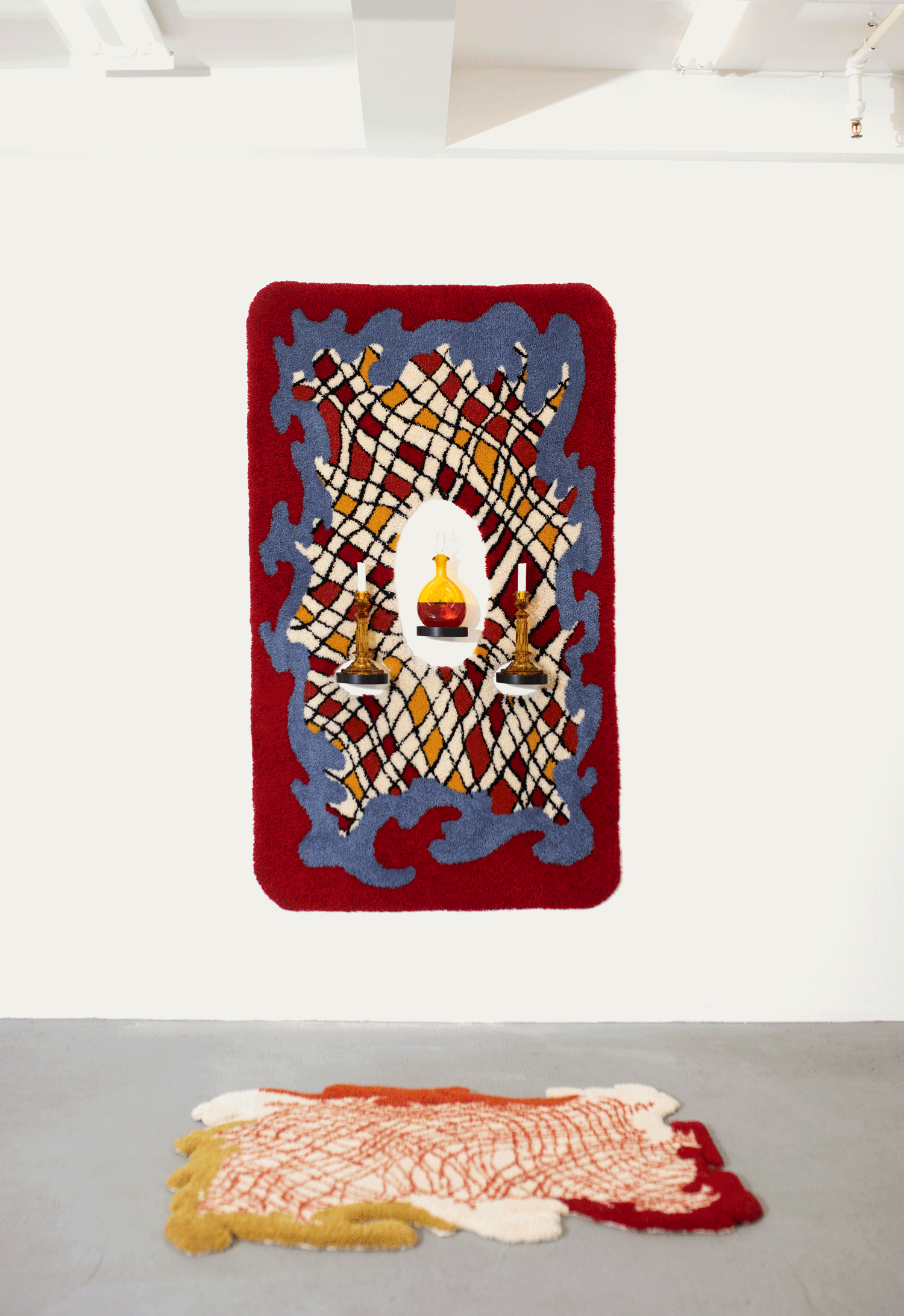We may earn revenue from the products available on this page and participate in affiliate programs.
Deciding to make rugs was one of the most impulsive decisions New York–based artist Sam Crow has ever made, she says, and the spark first ignited while she was doing a residency at Textile Arts Center in Brooklyn just last year. As she was surrounded by a community of talented fiber artists, Crow was desperate to explore a new medium, as she previously largely made hand embroidery, patches, and clothing, mostly for her friends. “The gears started turning,” she recalls. “The next thing I knew, I was purchasing a tufting gun.”

Really, though, it was the history and tradition of rug making that really drew her to the practice. Working at Heirloom, a Brooklyn store that carries antique, hand-knotted rugs, Crowe soaked up a wealth of knowledge about the creators behind the objects, including why they made rugs, how their pieces are best conserved, and how people today can continue to spread their stories.

“Fiber art is tied to the handmade and labor-intensive processes used to create it,” Crow explains. Being well-informed about the history of rug-making helped her understand what she wanted to do with the craft.

While some of the processes have become mechanized in the modern age, the designer says that the most interesting part of making textiles is all in the human hand. “Pushing outside of these boundaries doesn’t come naturally to me, but it feels necessary as I try to open up the medium,” she says.

Upon ordering her first tufting gun, Crow opened the box to find 20 parts and not a single piece of paper. There was no guidebook or website on how to run the machine, so she had to go deeper. “Every single answer to the hundreds of questions I had came from the generosity of a few tufting artists I found through Instagram and some kind people at my local hardware store,” she says.

After a few months of troubleshooting and a trip to Portland for a studio visit, she figured out how to run the machine, but that isn’t to say she didn’t struggle with it. “My air compressor has a personality similar to that of a toddler,” she jokes. Still, she didn’t give up and continued working with what she had, continuously learning how to work more efficiently.

When it comes to her process, Crow draws ideas out by hand and makes a few versions with different color combinations. Then she purchases yarn and begins tufting, creating outlines and filling them in in a repetitive motion that takes her into a deep meditative state. Unlike traditional rug-making, in which the fabric is created from scratch with no backing, Crow builds off pre-existing fabric, creating a “pile” height on top of it. Depending on the size and how intricate or irregular she’s made the cutouts and edges, the process of making one rug can take anywhere from two weeks to a month.
In her work at Heirloom, Crow says she’s been exposed to the world of Swedish Rya rugs, which have largely inspired the pieces she makes today. “Their psychedelic nature, specific color palette, and abstract designs are extremely fascinating to me,” she says. While traditional rug making utilizes intricate weaving and knotting techniques, Crow’s work is less functional and more conceptual, which makes it look and feel more akin to a painting. By straying from traditional weaving, Crow pushes the medium of rug making into another realm, allowing people to see these objects in new contexts—not just as simple floor coverings.

Using irregular cutouts and patterns, her newest work serves as a shrine to the cycles of life and death. “It’s a familiar story of rebirth, but creating these three distinguishable points of movement helps it to become more relatable or easier to accomplish in my world.” Some of these pieces, which are currently on display in a group exhibition curated by Brooke Wise at Shrine and Sargent’s Daughters in New York, even verge on installation art. In the future, she hopes to push her practice further and continue redefining an art form that’s been a household staple for hundreds of years.
Photos taken at Shrine and Sargent’s Daughters. Exhibit curated by Brooke Wise.
See more designers we love:
This Colorful Power Couple Proves There’s Lots of Love in the Greeting Card Biz
These Brooklyn-Based Designers Are Proof That Love and Work Can Mix
Could You Work With Your S.O.? Coming Soon’s Founders on Keeping the Spark Alive
